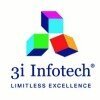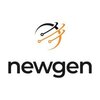Filter interviews by
Connectwise India Software Engineer Interview Questions and Answers
9 Interview questions
Code to swap elements in array using Go
Create a function that takes in an array of strings and two indices to swap
Use a temporary variable to store one of the elements before swapping
Update the array with the elements swapped
Singly linked list has one pointer in each node pointing to the next node, while doubly linked list has two pointers - one pointing to the next node and one pointing to the previous node.
Singly linked list is more memory efficient as it only requires one pointer per node.
Doubly linked list allows for traversal in both directions, while singly linked list only allows traversal in one direction.
Insertions and deleti...
Polymorphism is the ability of a function or method to behave differently based on the object it is called with.
Polymorphism allows objects of different classes to be treated as objects of a common superclass.
Types of polymorphism include compile-time (method overloading) and runtime (method overriding) polymorphism.
Example: Animal superclass with subclasses Dog and Cat. Both Dog and Cat can be treated as Animals.
Types of exceptions include checked and unchecked exceptions.
Checked exceptions are checked at compile time, like IOException.
Unchecked exceptions are not checked at compile time, like NullPointerException.
Keywords used in Java programming language
static keyword is used to create class-level variables and methods
finally keyword is used in exception handling to define a block of code that will always be executed
super keyword is used to refer to the superclass of the current object
Microservice architecture involves breaking down a large application into smaller, independent services. Services can communicate with each other through APIs.
Microservice architecture breaks down a large application into smaller, independent services that can be developed, deployed, and scaled independently.
Services communicate with each other through APIs, typically using HTTP/REST or messaging protocols like Ra...
Abstraction focuses on what an object does, while encapsulation focuses on how it does it.
Abstraction is the process of hiding complex implementation details and showing only the necessary information to the user.
Encapsulation is the process of wrapping data and methods into a single unit, preventing direct access to the data from outside the unit.
Abstraction is achieved through abstract classes and interfaces.
Enc...
Dependency injection is a design pattern that allows objects to be passed as dependencies rather than being created within a class.
Dependency injection promotes loose coupling and makes code more testable.
Concrete classes are tightly coupled and can be difficult to test.
Dependency injection can be achieved through constructor injection, setter injection, or interface injection.
Example: A class that requires a data...
Middleware is software that connects different applications or systems together.
Middleware acts as a bridge between different applications or systems
It provides a common platform for communication and data exchange
Examples of middleware include message queues, API gateways, and ESBs
Connectwise India Software Engineer Interview Experiences
4 interviews found

(10 Questions)
- Q1. Interview went really well but I am not sure why they rejected me at very first round. First interviewer asked me me about my tech stack and current project, she asked me total 4-5 programs I solve them a...
- Q2. What is your project architecture?
- Q3. How do you handle exceptions in your current project, types of exceptions
- Q4. Differencem between singly and doubly linked list
- Q5. What is static, finally, super keywords
- Q6. What is polymorphism and types
- Q7. Microservice architecture and how do you call one service from another service
- Ans.
Microservice architecture involves breaking down a large application into smaller, independent services. Services can communicate with each other through APIs.
Microservice architecture breaks down a large application into smaller, independent services that can be developed, deployed, and scaled independently.
Services communicate with each other through APIs, typically using HTTP/REST or messaging protocols like RabbitM...
- Q8. Docker, Kubernetes, multuthreding
- Q9. Types of exceptions with example
- Ans.
Types of exceptions include checked and unchecked exceptions.
Checked exceptions are checked at compile time, like IOException.
Unchecked exceptions are not checked at compile time, like NullPointerException.
- Q10. Java 8 features like functional interface, method reference, optional and all
Interview Preparation Tips
Skills evaluated in this interview
I applied via Referral and was interviewed in Sep 2023. There were 2 interview rounds.

(3 Questions)
- Q1. 1. Asked questions on java, streams api, spring boot basics, core java concepts like inheritance, transient keyword 2. Asked questions on golang
- Q2. 3. Basic DSA on arrays
- Q3. Write code to swap elements in array,use go
- Ans.
Code to swap elements in array using Go
Create a function that takes in an array of strings and two indices to swap
Use a temporary variable to store one of the elements before swapping
Update the array with the elements swapped
Interview Preparation Tips
Skills evaluated in this interview
I applied via Naukri.com and was interviewed in Aug 2022. There were 3 interview rounds.
(4 Questions)
- Q1. The interview was pretty much straight forward which includes .net, azure, cicd pipeline, and SQL questions.
- Q2. OOPs concepts and difference between abstraction vs encapsulation
- Ans.
Abstraction focuses on what an object does, while encapsulation focuses on how it does it.
Abstraction is the process of hiding complex implementation details and showing only the necessary information to the user.
Encapsulation is the process of wrapping data and methods into a single unit, preventing direct access to the data from outside the unit.
Abstraction is achieved through abstract classes and interfaces.
Encapsul...
- Q3. SOLID priciple with example
- Q4. Indexes in sql, temp table, query to get first and last employee records
(8 Questions)
- Q1. The interviewer asked to explain your previous projects and will try to add questions on it.
- Q2. Explain your current project
- Ans.
I am currently working on developing a mobile application for tracking personal fitness goals.
Developing a mobile application
Tracking personal fitness goals
Implementing features like goal setting, progress tracking, and workout logging
Using technologies like React Native, Firebase, and Redux
- Q3. What you do to find out issue in code
- Ans.
I use a combination of debugging tools and techniques to identify and resolve issues in code.
I start by reproducing the issue and identifying the scope of the problem.
I use debugging tools like breakpoints, logging, and tracing to narrow down the issue.
I review the code and documentation to understand the expected behavior.
I collaborate with team members to get a fresh perspective and brainstorm solutions.
I test and va...
- Q4. Unit test related question
- Q5. How to improve query performance
- Q6. Middleware and how it works
- Ans.
Middleware is software that connects different applications or systems together.
Middleware acts as a bridge between different applications or systems
It provides a common platform for communication and data exchange
Examples of middleware include message queues, API gateways, and ESBs
- Q7. Dependency injection, and compare it with concrete class
- Ans.
Dependency injection is a design pattern that allows objects to be passed as dependencies rather than being created within a class.
Dependency injection promotes loose coupling and makes code more testable.
Concrete classes are tightly coupled and can be difficult to test.
Dependency injection can be achieved through constructor injection, setter injection, or interface injection.
Example: A class that requires a database ...
- Q8. Transient vs scope difference
- Ans.
Transient variables are not serialized, while scoped variables are.
Transient variables are not saved when an object is serialized and deserialized.
Scoped variables are saved when an object is serialized and deserialized.
Transient variables are used to indicate that a variable should not be serialized.
Scoped variables are used to indicate that a variable should be serialized.
(3 Questions)
- Q1. Final round with the client where TL and manager interact with you, they explain their project. and try to ask question accordingly
- Q2. A string reverse code to write and then ask to explain steps plus asked if i can improve its execution time.
- Q3. Temp table vs cte in sql
- Ans.
Temp tables are physical tables created in tempdb while CTEs are temporary result sets.
Temp tables are useful for storing intermediate results and can be indexed.
CTEs are useful for simplifying complex queries and can be recursive.
Temp tables require more resources and can cause contention in tempdb.
CTEs are limited to the scope of a single query.
Example: CREATE TABLE #temp (id INT); WITH cte AS (SELECT id FROM table) ...
Interview Preparation Tips
- SOLID principle
- SQL Server
- Middleware
- dependency injection
Skills evaluated in this interview
I applied via Referral and was interviewed in Apr 2022. There were 3 interview rounds.

Regarding previous experience
(2 Questions)
- Q1. Regarding your technical experience about the technology & tools
- Q2. They will ask you the technical scenario & check your skills
Interview Preparation Tips
Top trending discussions






Interview questions from similar companies

I applied via Naukri.com and was interviewed before Mar 2020. There were 4 interview rounds.
Interview Questionnaire
4 Questions
- Q1. Difference between Hashtable and hashmap?
- Ans.
Hashtable is synchronized while hashmap is not.
Hashtable is thread-safe while hashmap is not.
Hashtable does not allow null keys or values while hashmap allows one null key and multiple null values.
Hashtable is slower than hashmap due to synchronization.
Hashtable is a legacy class while hashmap is a newer implementation.
- Q2. Difference between hashmap and concurrent hashmap?
- Ans.
Hashmap is not thread-safe while Concurrent Hashmap is thread-safe.
Hashmap is not suitable for multi-threaded environments as it can lead to race conditions and data inconsistencies.
Concurrent Hashmap allows multiple threads to access and modify the map concurrently without any data inconsistencies.
Concurrent Hashmap uses a technique called lock striping to achieve thread-safety.
Concurrent Hashmap is slower than Hashma...
- Q3. Jdbc step
- Q4. Spring ioc
Interview Preparation Tips
Skills evaluated in this interview

I appeared for an interview in Sep 2017.
Interview Questionnaire
4 Questions
- Q1. Technical interview take by client technical person actually they are hiring for another client so they took total 3 technical round and final will HR round
- Q2. Asking about life cycle of Dot net mvc contols entity frame work and SQL queries
- Q3. Problem based on oops and SQL queries outputs
- Q4. Basic questions about my self ,salary discussion basic formalities form I have to fill up
Interview Preparation Tips
Experience: There were around 15 objective question that includes mvc, c#.net and SQL server. It was very simple question like different types of filters,Acton results in mvc. Basic oops concept and dot net web page regarding
Round: Resume Shortlist
Experience: After completing test round another was technical round discussed maily for mvc and SQL server questions. Around 30 mint discussion. After qualify this round another round will start from client technical staff.
General Tips: It was for 2-3 year experience person very simple to crack but focus on you which profile you are looking for study interview questions from net
Skills: Dot net mve oops concept jQuery and SQL server

I applied via Naukri.com and was interviewed before May 2018. There were 5 interview rounds.
Interview Questionnaire
4 Questions
- Q1. Telephonic technical
- Q2. Core Java related exception handling ,design pattern ,oops solid design principle, rest API, different annotations of spring and jpa
- Q3. Same questions on telephonic round but detailed elaborate and given simple problem statement we had to justify that why it's time n space complexity valid. Rest API questions hibernate orm use
- Q4. Manager round just to check whether you have actually worked on project or not stress testing performance questions scenario questions
Interview Preparation Tips
Skills: Core Java sevlet JSP hibernate spring rest API, Communication, Body Language, Problem Solving, Analytical Skills, Decision Making Skills
Duration: 1-4 weeks

I appeared for an interview in Sep 2019.
Interview Questionnaire
1 Question
- Q1. Pl sql related questions
Interview Preparation Tips
Laterly after I had lunch by 2pm Hr came n told me that Manager is not available now so we will be conducting ur further round in weekdays.
Then there was no mail or call so I purposely mailed them still haven't got proper response from them, so at last I told my friend who referd me to ask for an update the same HR told him that they want Immediate joiner so we can't process him to further round. Wasted my whole day over there

I applied via Recruitment Consultant and was interviewed before Jan 2020. There were 5 interview rounds.
Interview Questionnaire
1 Question
- Q1. What Prog Languages known? Prior Software Experience? How good on U.S. Client Face to Face and telephonic interaction for projects?
- Ans.
I am proficient in Java, Python, and C++. I have 2 years of experience in software development. I have excellent communication skills for client interaction.
Proficient in Java, Python, and C++
2 years of software development experience
Excellent communication skills for client interaction
Interview Preparation Tips

Interview Questionnaire
2 Questions
- Q1. Basics from all framework you have worked on.
- Q2. There working all are non technical people's they don't know the projects here major people working in testing and non related work
Connectwise India Interview FAQs
Tell us how to improve this page.
Connectwise India Interviews By Designations
- Connectwise India Software Engineer Interview Questions
- Connectwise India Technical Support Specialist 2 Interview Questions
- Connectwise India Technical Support Engineer Interview Questions
- Connectwise India Product Manager Interview Questions
- Connectwise India Software Developer Interview Questions
- Connectwise India Senior Software Engineer Interview Questions
- Connectwise India Security Analyst 1 Interview Questions
- Connectwise India Software Developer Intern Interview Questions
- Show more
Interview Questions for Popular Designations
- Software Developer Interview Questions
- Senior Software Engineer Interview Questions
- Senior Engineer Interview Questions
- System Engineer Interview Questions
- Associate Software Engineer Interview Questions
- Project Engineer Interview Questions
- Lead Engineer Interview Questions
- Software Development Engineer Interview Questions
- Show more
Overall Interview Experience Rating
based on 2 interview experiences
Difficulty level
Duration
Software Engineer Interview Questions from Similar Companies
Connectwise India Software Engineer Reviews and Ratings
based on 6 reviews
Rating in categories
|
Technical Support Engineer
184
salaries
| ₹3.2 L/yr - ₹6.1 L/yr |
|
Senior Software Engineer
131
salaries
| ₹16 L/yr - ₹26.8 L/yr |
|
Security Analyst
122
salaries
| ₹3.5 L/yr - ₹6.1 L/yr |
|
Software Support Specialist
79
salaries
| ₹3.5 L/yr - ₹6.2 L/yr |
|
Software Engineer
67
salaries
| ₹4.5 L/yr - ₹14.8 L/yr |

ITC Infotech

CMS IT Services

KocharTech

3i Infotech
- Home >
- Interviews >
- Connectwise India Interview Questions
















